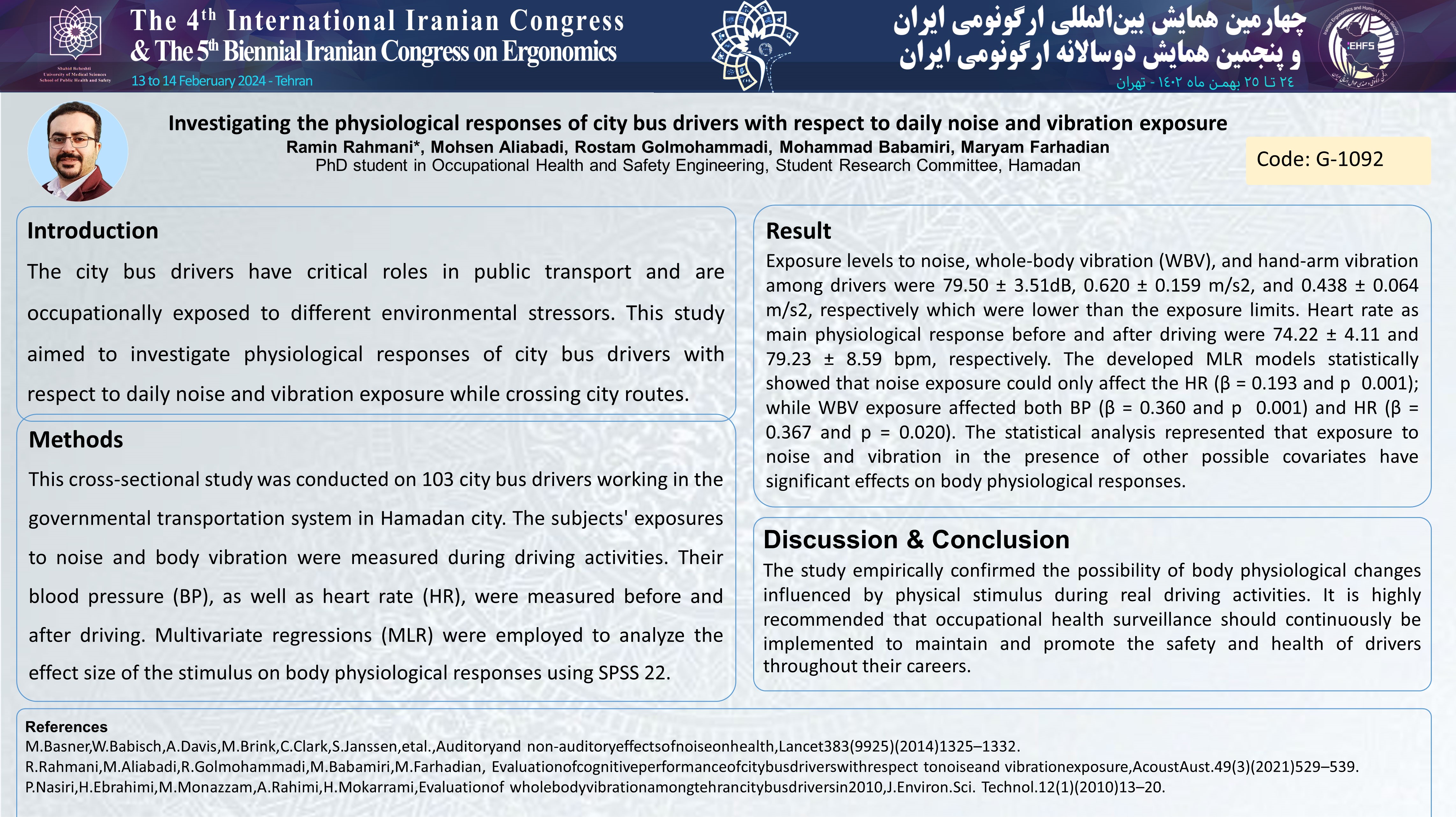Investigating the physiological responses of city bus drivers with respect to daily noise and vibration exposure
Code: G-1092
Authors: Ramin Rahmani ℗, Mohsen Aliabadi ©, Rostam Golmohammadi, Mohammad Babamiri, Maryam Farhadian
Schedule: Not Scheduled!
Download: Download Poster
Abstract:
Introduction
The city bus drivers have critical roles in public transport and are occupationally exposed to different environmental stressors. This study aimed to investigate physiological responses of city bus drivers with respect to daily noise and vibration exposure while crossing city routes.
Methods and Materials / Case Report
This cross-sectional study was conducted on 103 city bus drivers working in the governmental transportation system in Hamadan city. The subjects' exposures to noise and body vibration were measured during driving activities. Their blood pressure (BP), as well as heart rate (HR), were measured before and after driving. Multivariate regressions (MLR) were employed to analyze the effect size of the stimulus on body physiological responses using SPSS 22.
Results
Exposure levels to noise, whole-body vibration (WBV), and hand-arm vibration among drivers were 79.50 ± 3.51dB, 0.620 ± 0.159 m/s2, and 0.438 ± 0.064 m/s2, respectively which were lower than the exposure limits. Heart rate as main physiological response before and after driving were 74.22 ± 4.11 and 79.23 ± 8.59 bpm, respectively. The developed MLR models statistically showed that noise exposure could only affect the HR (β = 0.193 and p 0.001); while WBV exposure affected both BP (β = 0.360 and p 0.001) and HR (β = 0.367 and p = 0.020). The statistical analysis represented that exposure to noise and vibration in the presence of other possible covariates have significant effects on body physiological responses.
Conclusion
The study empirically confirmed the possibility of body physiological changes influenced by physical stimulus during real driving activities. It is highly recommended that occupational health surveillance should continuously be implemented to maintain and promote the safety and health of drivers throughout their careers.
Key Words
Noise, human vibration, physiological responses, bus drivers
Comments (0)
Post a comment
Post comment is closed by admin.
